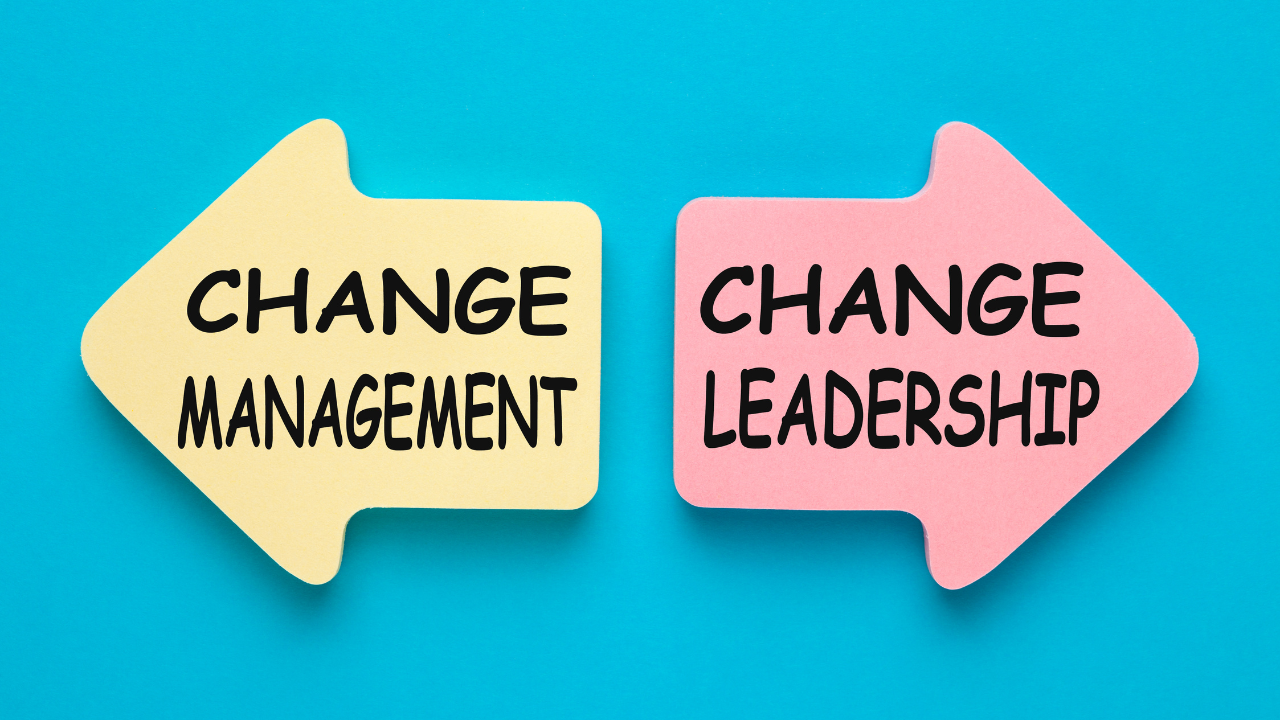Change is an inevitable part of business growth and development. Yet, despite its necessity, implementing change often meets resistance from those it affects. As a leader, understanding and addressing this resistance is crucial to ensure smooth transitions and sustained success. This guide explores practical strategies to handle resistance to change, providing insights and real-world examples to support leaders and entrepreneurs in their journey toward effective change management.
Understanding Resistance to Change
Resistance to change refers to the pushback or reluctance of individuals or groups when faced with new processes, structures, or cultural shifts within an organization. This resistance can manifest in various forms, including decreased productivity, vocal opposition, or subtle undermining of initiatives. Recognizing and understanding the root causes of resistance is the first step in effectively managing it.
Common Causes of Resistance
- Fear of the Unknown: Change often brings uncertainty, leading employees to worry about their roles, job security, or ability to adapt to new expectations.
- Lack of Trust in Leadership: If employees do not have confidence in those leading the change, they are more likely to resist initiatives.
- Poor Communication: Insufficient or unclear information about the change can result in misunderstandings and speculation, fueling resistance.
- Emotional Responses: Change can evoke emotions such as fear, anxiety, or loss, especially if individuals feel a strong attachment to the current state.
- Lack of Competence: Employees may doubt their skills or knowledge to perform under new systems or processes, leading to resistance.
- Perceived Negative Impact: If the change is seen as a threat to personal interests or job satisfaction, resistance is likely to occur.
- Organizational Culture and Norms: Established behaviors and norms can be deeply ingrained, making shifts challenging to accept.

Strategies for Overcoming Resistance
1. Communicate Transparently and Effectively
Clear and open communication is vital in alleviating fears and uncertainties associated with change.
Action Steps:
- Articulate the Vision: Clearly explain the reasons for the change, the benefits it brings, and how it aligns with the organization’s goals.
- Provide Regular Updates: Keep employees informed throughout the process to prevent misinformation and rumors.
- Encourage Open Dialogue: Create forums where employees can ask questions, express concerns, and provide feedback.
Example: A tech company implementing a new project management tool held weekly Q&A sessions, allowing employees to voice concerns and receive timely information, which reduced apprehension and increased adoption rates.
2. Involve Employees in the Change Process
Engaging employees in planning and decision-making fosters a sense of ownership and reduces resistance.
Action Steps:
- Form Change Committees: Include representatives from various departments to participate in the change planning and implementation.
- Seek Input and Feedback: Actively involve employees in discussions about how changes will be implemented and solicit their suggestions.
- Empower Decision-Making: Allow teams to have a say in how they adapt their workflows to accommodate changes.
Example: A manufacturing firm facing resistance to new safety protocols involved floor staff in developing implementation strategies, resulting in practical solutions and higher compliance rates.
3. Provide Adequate Training and Support
Ensuring that employees feel competent and supported in the new environment is crucial for reducing resistance.
Action Steps:
- Offer Comprehensive Training Programs: Provide learning opportunities that equip employees with the necessary skills and knowledge.
- Establish Support Systems: Create help desks, mentorship programs, or peer support groups to assist employees during the transition.
- Monitor Progress and Address Gaps: Regularly assess the effectiveness of training and provide additional resources as needed.
Example: A financial services company introduced a new software system and offered personalized training sessions, leading to a smoother transition and increased confidence among staff.
4. Address Emotional Responses with Empathy
Recognizing and validating the emotional impact of change helps in building trust and easing resistance.
Action Steps:
- Acknowledge Feelings: Openly discuss the emotional aspects of change and show understanding of employees’ concerns.
- Provide Counseling Services: Offer access to professional support for those struggling with the transition.
- Foster a Supportive Culture: Encourage managers to be approachable and empathetic, creating a safe space for employees to express their feelings.
Example: During a company merger, leadership held town hall meetings to address employee anxieties, demonstrating empathy and transparency, which helped in reducing uncertainty.
5. Demonstrate Strong and Supportive Leadership
Leaders play a critical role in modeling behaviors and setting the tone for change.
Action Steps:
- Lead by Example: Embrace the change yourself and exhibit the behaviors you wish to see in your team.
- Be Accessible and Visible: Maintain a presence among employees, showing commitment and willingness to engage.
- Build Trust: Consistently act with integrity and follow through on promises to strengthen credibility.
Example: A retail chain’s CEO actively participated in customer service training during a company-wide initiative to improve customer experience, signaling commitment and encouraging employee participation.
6. Highlight Quick Wins and Celebrate Successes
Showcasing early achievements can build momentum and demonstrate the benefits of change.
Action Steps:
- Identify and Share Early Successes: Communicate short-term wins to illustrate progress and validate efforts.
- Recognize and Reward Contributions: Acknowledge individuals and teams who contribute positively to the change process.
- Use Success Stories as Motivation: Leverage testimonials and case studies to inspire and encourage others.
Example: After implementing a new inventory system, a logistics company highlighted a 10% improvement in order accuracy within the first month, boosting morale and support for the change.
7. Address Practical Concerns and Remove Barriers
Identifying and mitigating obstacles can ease the transition and reduce resistance.
Action Steps:
- Assess and Adjust Workloads: Ensure that employees are not overburdened during the change process.
- Provide Necessary Resources: Allocate adequate tools, time, and support to facilitate adaptation.
- Simplify Processes: Streamline new procedures to make them as user-friendly as possible.
Example: A healthcare facility transitioning to electronic medical records provided additional staffing support during the initial rollout, alleviating workload concerns and facilitating smoother adoption.

Managing Resistance in a Corporate Setting
Scenario: A mid-sized marketing firm decided to adopt a new digital collaboration platform to enhance productivity. Despite the potential benefits, the proposal met with significant resistance from employees accustomed to existing workflows.
Approach:
- Transparent Communication: Leadership explained the rationale behind the change, emphasizing benefits such as improved efficiency and client satisfaction.
- Employee Involvement: Teams were invited to participate in selecting the platform and tailoring it to their needs.
- Comprehensive Training: Customized training sessions were conducted to ensure all employees felt confident using the new tool.
- Support Systems: A dedicated helpdesk was established to address technical issues and user concerns promptly.
- Recognition of Efforts: Early adopters who effectively utilized the platform were recognized and rewarded, encouraging others to follow suit.
Outcome: Within six months, the firm observed a notable increase in project turnaround times and team collaboration, with employee satisfaction regarding the new system at 85%. What initially began with skepticism turned into a clear win for both productivity and morale, proving that resistance, when handled thoughtfully, can evolve into ownership and enthusiasm.

The Role of Leadership Skills in Change Management
Let’s zoom out a bit and talk about leadership skills in the broader sense—because managing resistance isn’t just about solving a temporary issue. It’s about developing the kind of leadership that can guide people through change repeatedly, as markets shift and companies grow.
Here are the most critical leadership traits you’ll need when navigating resistance to change:
- Empathy: To understand the emotional landscape of your team
- Clarity: To communicate the what, why, and how of the change
- Resilience: To stay steady when things don’t go smoothly
- Adaptability: To pivot when a plan needs adjustment
- Vision: To help people see the long-term benefit beyond short-term discomfort
And perhaps most importantly: consistency. People don’t need a leader who has all the answers, they need one who shows up, listens, adjusts, and keeps the team focused on what matters. Consistency builds trust, and trust is what turns resistance into readiness.

Why Handling Resistance Boosts Overall Business Performance
Resistance might seem like a roadblock—but when managed well, it actually becomes a tool for growth. That’s because effective change management leads to better business performance in several ways:
- Stronger alignment across teams: When change is explained well and goals are clearly connected to outcomes, departments naturally start pulling in the same direction.
- Faster execution: Teams that feel heard and prepared adapt more quickly to new systems, workflows, and strategies.
- More innovation: When employees feel safe expressing concerns and offering input, they’re more likely to bring forward creative ideas and solutions.
- Improved retention: People are more likely to stay at a company where change is handled with empathy, transparency, and support.
Managing resistance doesn’t just make the change easier—it makes the company stronger.

The Link Between Talent Management and Change
Finally, let’s talk about talent management, because this is where your people strategy meets your change strategy.
During periods of transition, you’ll often discover who your most adaptable, resilient, and future-ready employees are. That insight is valuable. It helps you identify:
- Who might be ready for a leadership track
- Who could mentor others through change
- Where upskilling or additional support is needed
Use change as a lens for talent development. Provide stretch opportunities to those who are leaning in. Offer coaching or mentorship to those struggling. And most of all create space for growth.
If your team emerges from a big change feeling stronger, smarter, and more unified, you haven’t just managed resistance—you’ve elevated your talent.
Conclusion
Resistance is part of every change journey. It’s not a sign that something’s gone wrong. It’s a sign that people care, that they’re invested, and that they’re unsure about what’s coming. That’s natural.
But how you respond as a leader makes all the difference.
You can ignore resistance and hope it fades. You can bulldoze through it with authority. Oryou can listen. Engage. Adjust. And lead with the kind of clarity and empathy that turns resistance into respect.
Because at the end of the day, people don’t resist change itself. They resist confusion, loss of control, and uncertainty. When you remove those? You open the door to possibility.
So don’t just push change. Lead it. Thoughtfully. Transparently. And with the kind of leadership that not only drives results but brings people along for the journey.

